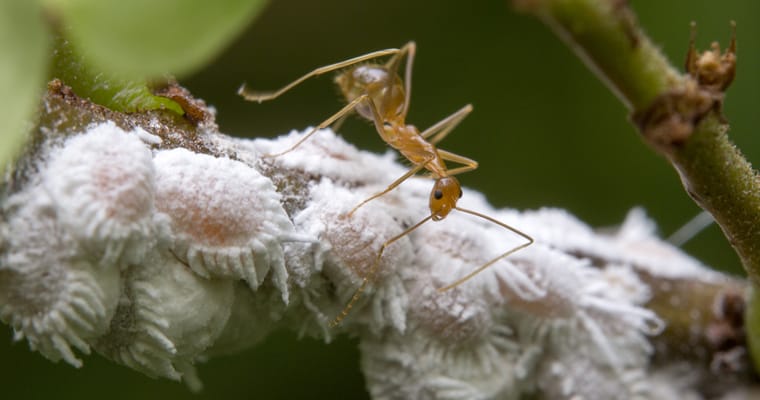The 2015-16 federal budget offers little that’s new for Australia’s biosecurity, especially when it comes to protecting the environment.
Environmental biosecurity, badly in need of specific attention by the Federal Government, receives no mention in this year’s budget beyond the work carried out as part of the broader quarantine system. Our proposal for Environment Health Australia, which received ‘strong support’ from environment minister Greg Hunt prior to the last election, remains unfunded.
The Department of the Environment has pathetically inadequate resources for pursuing strategic threat abatement for a host of federally listed weed, pest and insect threats such as tramp ants (including red fire ants and yellow crazy ants).
Feral cats are the standout exception and a new threat abatement plan and possibly some state and federal government action may emerge from the July 2015 Threatened Species Summit.
In fact biosecurity gets no mention in the Department of Environment budget papers, and invasive species are only mentioned in the context of land management – for the Australian Government managed national parks and for grant programs such as Landcare.
Compared to the millions of dollars the government spends on specific initiatives to reduce biosecurity threats facing industry, the environment remains a poor second cousin.
Looking closely at the Department of Agriculture, which leads on biosecurity within government, it has emerged largely unscathed from the budget.
Staffing numbers have increased slightly to 4180, but this comes after 200 jobs were shed over the past two years.
With biosecurity making up about 60% of the department’s work, we know that biosecurity operations need people on the ground to staff border control points and work with communities, such as those in Cape York where new disease and pests arrive. Trade volumes and passenger movements into Australia have been exponentially increasing, with a corresponding rise in the risk of new invasive species.
It is hard to see how biosecurity can be improved with constantly declining budgets in relative terms.
The Department of Agriculture is one of eight agencies to be subject to a ‘functional review’. Its work will be scrutinised with a view to creating greater efficiencies, redesigned operations and major cost savings. We will be closely watching the effect of this on biosecurity operations.
There are no major new biosecurity initiatives in the budget.
Work continues on a $273 million amalgamation of quarantine processing operations into a single ‘Post Quarantine Facility’ near Melbourne airport. It replaces five existing facilities in Sydney, Perth, Adelaide and two at Melbourne.
The $3 million invasive marine pests review is underway and will fulfil a pre-election policy to plug an important policy gap.
Greater cost recovery from importers and exporters continues to fund biosecurity activities and export certification. The coming year sees $5.1 million raised from external funding for biosecurity, compared with $4.2 million for the previous year.
Several biosecurity related bodies and committees are to be abolished or merged[1].
The new $5 billion Northern Australia Infrastructure Facility announced in the budget, a loan facility for new ports, pipelines, electricity and water infrastructure to support the industrial development of the north is likely to facilitate the spread of new invasive species such as weeds unless stringent quarantine is in place.
Notes
[1] The following biosecurity related bodies were mentioned as abolished in the 2015-16 budget:
- Community Consultative Committee under the intergovernmental National Biosecurity Committee. The Invasive Species Council was part of this ineffective group and doesn’t regret its demise.
- the Industry Liaison Committee a stakeholder group that included the Invasive Species Council and oversaw the development of the Biosecurity Bill, work now completed.
- the National Decision Making and Investment Working Group also under the National Biosecurity Committee.
- Point-of-Care Tests Working Group of the Animal Health Laboratory Standards Sub–Committee that coordinates standards in animal health laboratories.
- National Forest Health Sub-committee, with functions transferring to other plant health sub-committees.
- The Invertebrate Pests Subcommittee and Australian Weeds Committee will merge into the Invasive Plants and Animals Committee. This was broadly welcomed when it took place in 2014.
- Aquaculture Committee, another inter-governmental committee that sits under the Australian Fisheries Management Forum.


